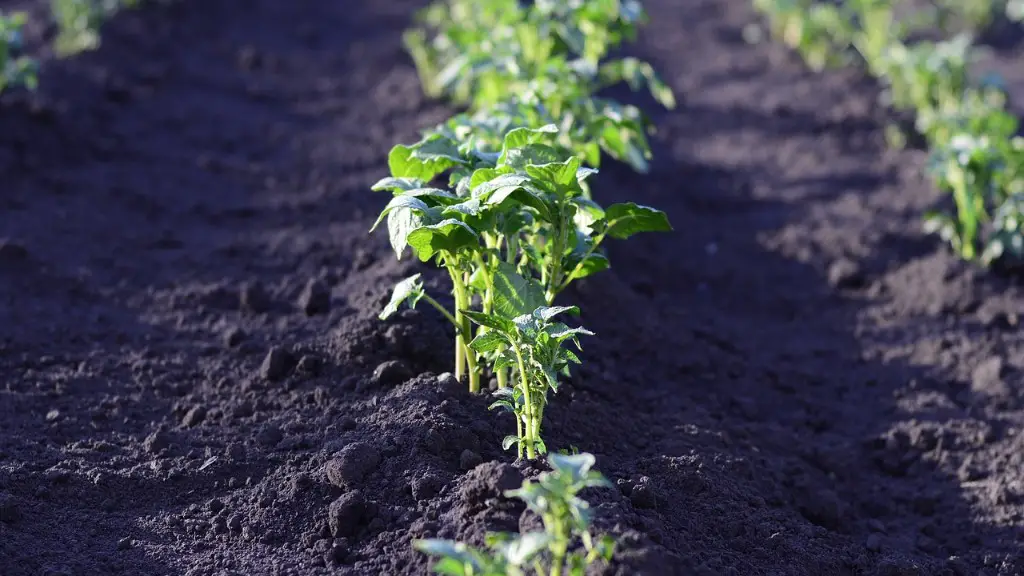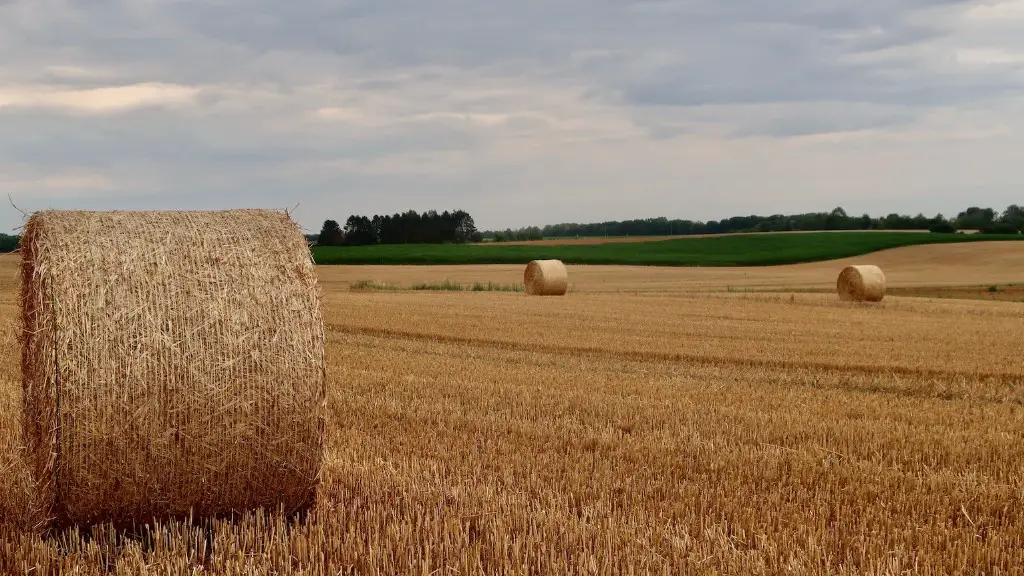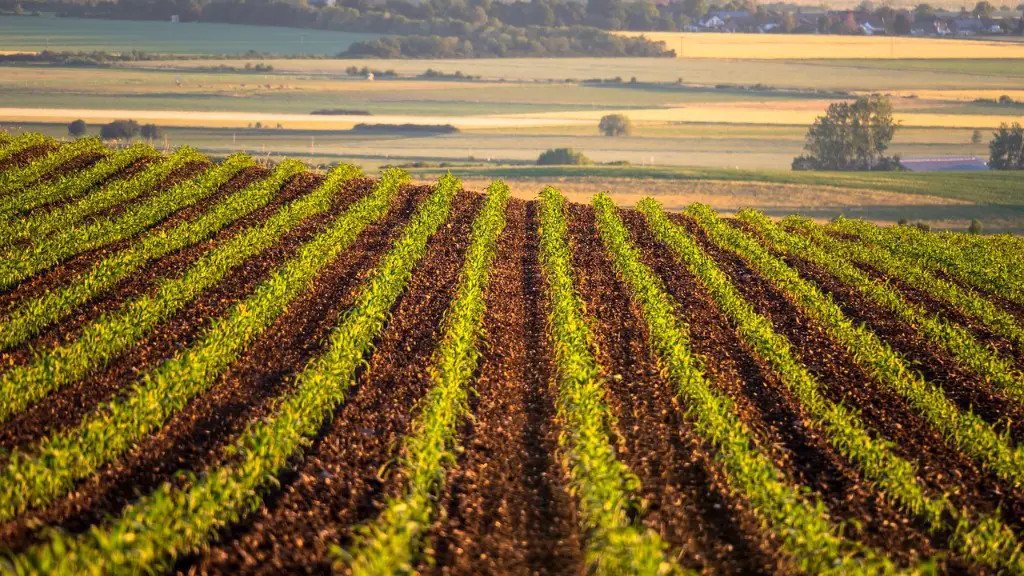The use of genetic technology in agriculture has helped farmers to produce crops that are more resistant to pests and diseases. This has resulted in higher yields and better quality crops. Additionally, farmers have been able to develop new varieties of crops that are better adapted to specific growing conditions.
Genetic technology is used in agriculture to help improve crop yields, create new and improved strains of crops, and to help farmers manage pests and diseases. Genetic technology can also be used to create new food products and to improve the quality of existing food products.
How is genetics used in agriculture?
Genome editing is a powerful tool that can be used to improve crops. By identifying the genes that make plants more prone to disease or make them difficult to harvest, scientists can edit the genes to produce plants with desirable traits. This is a very precise process that only affects the desired trait.
Gene technology has the potential to improve crop yields and nutritional value. This would be a great boon to the agricultural industry and could help to feed the growing population. Additionally, this technology could be used to remove harmful qualities from crops, making them safer for consumption.
What are examples of genetics in agriculture
Agricultural genetics is the study of how traits are inherited in crops or livestock. An example of a plant trait is the number of days it takes for an ear of corn to reach maturity, or harvest. An example of a livestock trait is how tall a cow is expected to grow in its first year of life. By understanding how these traits are inherited, we can develop ways to improve crops and livestock through breeding.
Advancements in plant genetics and genomics are helping to support higher production and cultivation of crops resistant to pests, pathogens, and drought. This is allowing farmers to produce more food with fewer inputs, and helping to ensure a more secure food supply for the future.
How do farmers use genetics to produce better plants?
Selective cross breeding is a process used to create new varieties of plants with desired traits. Pollen with the genes for a desired trait is transferred from plants of one crop variety to the flowers of another variety with other desirable traits. Eventually, through careful selection of offspring, the desired trait will appear in a new variety of plants. This process can be used to create plants with a variety of desired traits, such as resistance to pests or diseases, improved flavor or appearance, or increased yield.
The possible benefits of genetic engineering are vast and varied. More nutritious and tastier food is one potential benefit, as is the production of disease- and drought-resistant plants that require fewer environmental resources. With further research and development, the potential applications of genetic engineering are only likely to increase, bringing even more benefits to both individuals and society as a whole.
How does genetic help in crop protection?
It is important to utilize genetic diversity within our crops to limit certain pathogen strains from becoming dominant and causing severe damage. We use observation of symptoms, DNA sequences, and enzyme-based approaches to identify pathogens. Pathogens that are specific to our novel crops will require intensive evaluation.
The basic idea of genetic engineering is to change the genes of an organism in order to change its characteristics. This can be done by either adding new genes, or by removing existing ones.
The most common use of genetic engineering is in the production of crops and livestock. By adding or removing specific genes, farmers can improve the yield of their crops, or make their livestock more resistant to disease.
In recent years, genetic engineering has also been used to produce cancer therapies and brewing yeasts. In the future, it is likely that this technology will be used to create even more new and innovative products.
What are three examples of genetic technologies
There are three main categories of concern regarding the application of genetic technologies: 1) Human cloning 2) Genetic trait selection 3) Genetic modification. While all of these categories have the potential to be used for good, they also each have the potential to be used for harm. It is important to consider the ethical implications of each of these categories before proceeding with any genetic technologies.
Plant genetic modification is the process of manipulating the genes of a plant to change its characteristics. This can be done through simple selection, crossing, interspecies crossing, embryo rescue, somatic hybridization, somaclonal variation, or mutation breeding. Each method has its own advantages and disadvantages, and the best method for a particular plant will depend on the desired outcome.
What crops are typically genetically modified?
There are a variety of GMO crops in the United States, including corn, soybean, cotton, potato, papaya, summer squash, and canola. GMO crops have been controversial, with some people arguing that they are unsafe and should not be grown. However, there is no evidence that GMO crops are unsafe, and they offer many benefits, such as increased yields and resistance to pests and diseases.
In medicine, genetic engineering has been used to mass-produce insulin, human growth hormones, follistim (for treating infertility), human albumin, monoclonal antibodies, antihemophilic factors, vaccines, and many other drugs. In research, organisms are genetically engineered to discover the functions of certain genes.
Genetic engineering is a powerful tool that can be used to improve the human condition. With proper regulation, it has the potential to improve the quality of life for people suffering from many different diseases.
What are the recent advances in genetics and plant breeding
Recent advances in the field of plant breeding include the development of a new breeding technique called genome editing. Genome editing technologies have emerged as powerful tools to precisely modify the crop genomes at specific sites in the genome, which has been the longstanding goal of plant breeders.
With genome editing, plant breeders can now make targeted changes to the genome of a plant, which can lead to the development of new and improved plant varieties with desired traits. This is a major breakthrough in the field of plant breeding, and it holds great promise for the future of food production.
GMO foods are designed to be healthier and cheaper to produce. Advantages of GMO foods include added nutrients, fewer pesticides, and cheaper prices. Disadvantages of GMO foods can be allergic reactions or increased antibiotic resistance.
What are some ways that genetic modification has improved farm crops?
Today, most GMO crops were developed with the help of farmers to prevent crop loss. The three most common traits found in these crops are resistance to insect damage, tolerance to herbicides, and resistance to plant viruses. These crops have helped farmers around the world to produce larger and healthier yields.
There are two main types of genetic modification methods for crops: traditional crop modification and genetic engineering. Traditional methods of modifying plants, like selective breeding and crossbreeding, have been around for nearly 10,000 years. Genetic engineering is a more recent method that involves directly altering the DNA of a plant to change its characteristics. Genome editing is a type of genetic engineering that is becoming increasingly popular due to its precision and efficiency.
Warp Up
There are a number of ways in which genetic technology is used in agriculture. One way is through the use of genetically modified (GM) crops. These are crops that have been modified through the introduction of foreign genes in order to improve one or more of their characteristics, such as resistance to pests or herbicides. Another way in which genetic technology is used in agriculture is through the use of marker-assisted selection (MAS). This is a process whereby specific genes associated with desirable traits are identified and used to help select plants with the desired traits for breeding purposes.
Genetic technology is used in agriculture to improve the quality of crops and to make them more resistant to pests and diseases. This technology is also used to create new varieties of plants that are better suited to the needs of farmers and to the conditions of the local environment.





